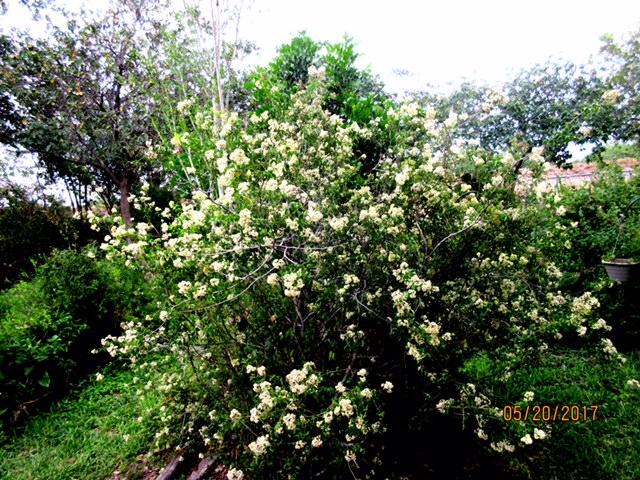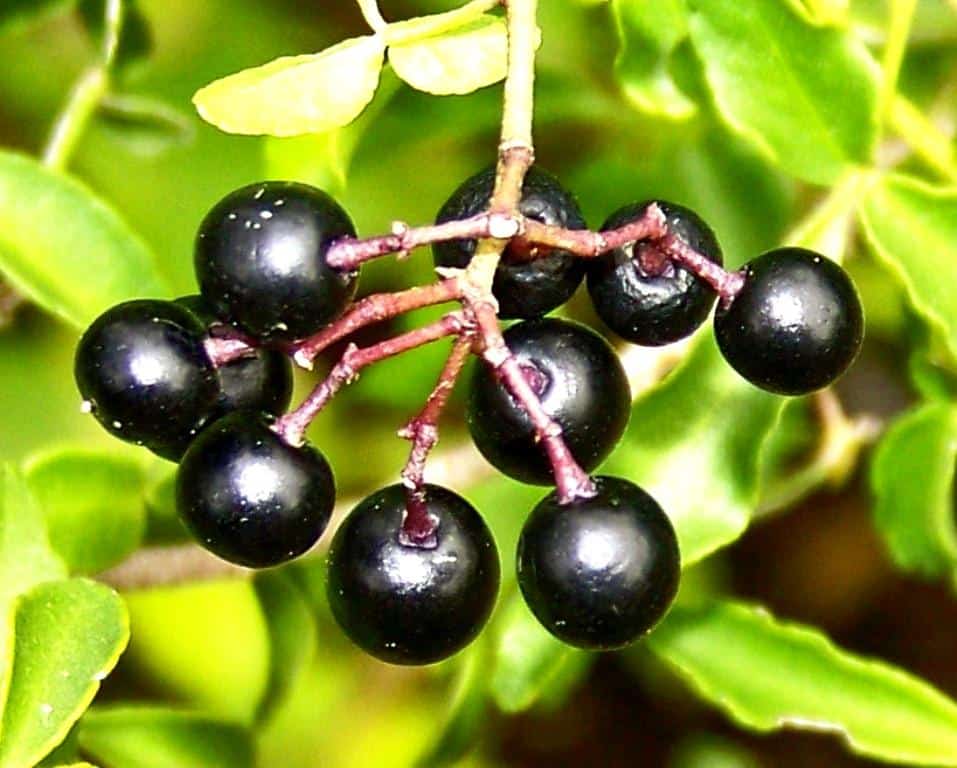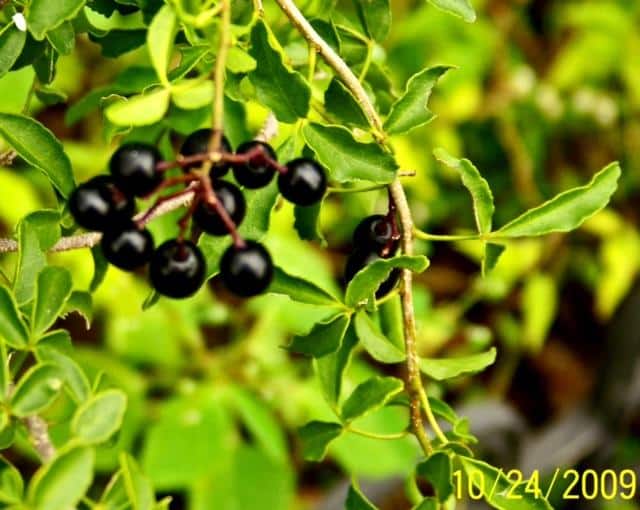By Christine Jordan
Amyristexana – Texas Torchwood, commonly known as Chapotillo or Wild Rue, is a native understory shrub that deserves a place in our gardens. It is an endemic plant that grows only here in the thickets of undisturbed wooded areas of South Texas. The plant is a multi-branched evergreen shrub with small rich deep green pinnately compound leaflets and grey mottled bark.
This plant, unlike so many other natives, has no thorns – a trait which makes it very garden friendly. It grows about 3-9 feet tall and 3-8 feet wide and responds well to pruning. When plants are young, you can trim the main stem to encourage earlier multibranching and create a stocky, fuller plant. When the wood is cut or the leaves are crushed, the plant gives off an earthy citrus scent; anaeromatic quality that is not limited to the stems and leaves.
Torchwood has clusters of small white sweet scented flowers that grow at the terminal ends of the current year’s growth. After successful pollination, dark purple fruits form, each containing a single seed. The flowers and fruit give added interest to the plant throughout the growing season. In the wild the flowering and fruiting cycle is triggered by rainfall. In the garden this cycle varies and can occur anytime in spring, summer, or fall with supplemental watering.
We are not the only ones who appreciate the flowers and fruit of the Texas Torchwood. The flowers attract many types of insects and the fruit is eaten by birds, lizards and other wildlife. Torchwood is also the host plant for the Giant Swallowtail and the Black Swallowtail butterflies. The adults lay their eggs on the tender new growth of mature plants and seedlings.
When I grew Texas Torchwoods for the Rio Reforestation Project I would have to remove the caterpillars from the seedlings in my growing benches. They would arch their backs and extend their yellow horns and release a scent that I found quite pleasant but I am sure was meant to be a deterrent to my meddling. I would then relocate them to the mature torchwoods in my garden to eliminate the culling of my seedlings that would naturally occur in the wild. This is a wonderful example of the interconnection of native plants and their importance to wildlife in our local ecosystem.
Adaptation of native plants to their environment is another good reason to include Torchwoods in our landscapes. Texas Torchwood is very tolerant of drought and extremes in temperature. Once established, supplemental water is not required; however the plants will be more dense and grow faster with a few good soakings in the heat of the summer. I am extremely happy to report that Texas Torchwood can also tolerate extreme cold as well.
Other native plants such as the Texas Baby bonnet, Snake eyes and Wild Olive Trees lost their leaves this past February. The devastating freezing temperatures and precipitation did hardly any damage to the Texas Torchwood. Only the tips of the new growth curled and turned brown, but the mature leaves remained green and healthy. Considering what I have observed, its cold tolerance can probably be attributed to the high oil content in the plant. Other natives such as the Colima and some non-native citrus with a similarly high oil content also fared well during the freeze.
Amyris oil from torchwood plants is collected from species of that genus in other parts of the world. The oil is used in aromatherapy for relaxation and in numerous alternative medicinal treatments. The branches also ignite quickly and burn with such intensity that people would use them for night fishing. If I could recommend only one native plant for people to include in their landscapes, it would be our Texas Torchwood! Unfortunately, it is a rare specimen not seen in the retail nursery trade. They can be found in some of our local native plant nurseries and there will be some available at the Master Gardeners Plant Sale in April.
Good luck finding this gem for your landscape. It is truly a worthwhile quest. More information and images of Texas Torchwood can be found in the sources below. https:/aggie-horticulture.tam.edu/ornamentals/nativeshrubs/amyristexana.htm www.aromahq.com/amyris-oil







